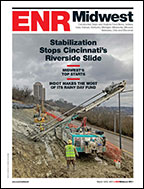Unlike the high cost of life and limb, accident prevention is a less tangible thing to measure. But Aviad Shapira has found a new way to quantify risks on construction sites.

Shapira, who teaches at Technion-Israel Institute of Technology and co-authors “Construction Planning, Equipment and Methods” (like ENR, published by McGraw-Hill Cos.), studies the management of construction technology. In the 1990s he developed a model that assisted contractors in designing economical shoring towers in high-clearance situations. Shapira also helped invent a crane camera that is popular among contractors in Israel.
This time, Shapira has turned his attention to what he calls differences in “crane culture.” The hazards around mobile cranes are well-known, especially in the U.S. Wide, open space once necessitated a lifting machine that could roam freely. But the tower crane, a predominantly European machine that serves the jobsite from a fixed point, comes with its own safety issues. As more tower cranes are used in the U.S. and other countries—and as more of them fail—contractors, regulators and the public are becoming painfully aware of the dangers. Over the past 10 years, the number of tower cranes in the U.S. alone has tripled.
Produced under a grant from the National Insurance Institute of Israel, Shapira’s research ranks 13 top risks around tower cranes, whose surge in accidents has rocked josbites around the world.
Shapira attributes this trend to an industrialization of the jobsite—assembling more than fabricating. “Until 30 to 40 years ago, we had a lot of production equipment on-site,” he says. “Now, we need to move things, so there is a great deal of need for crane time.”
Working under a grant from the National Insurance Institute of Israel, Shapira in four research papers explains how he nailed down the top safety factors. He then provides a formula to help managers determine their exposure. Three papers were published last year, and one is still pending publication in the American Society of Civil Engineers “Journal of Construction Engineering and Management.”



Post a comment to this article
Report Abusive Comment